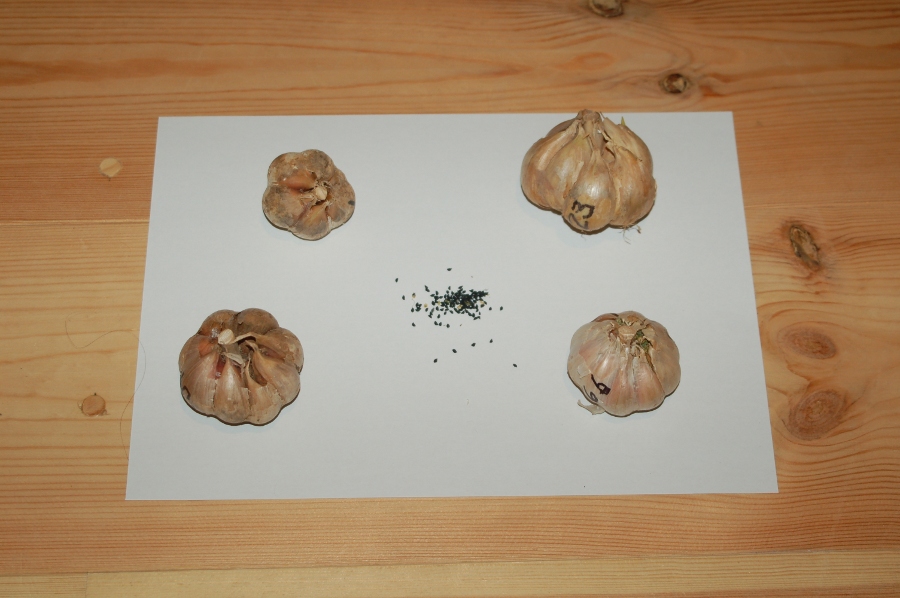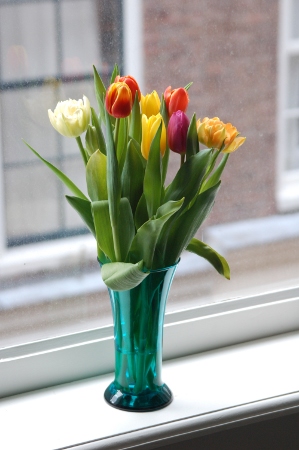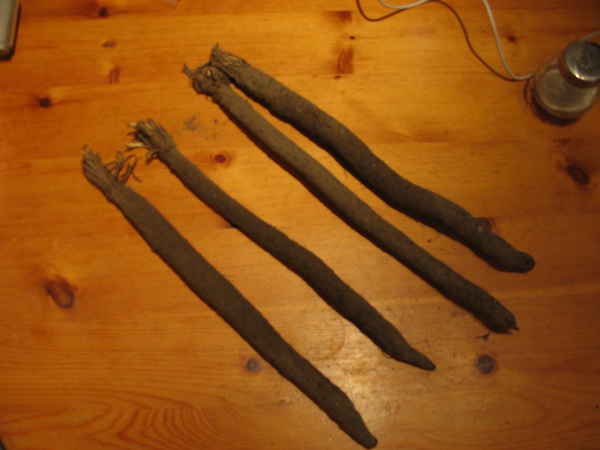Dr. Ivan Buddenhagen just sent me the 4 bulbs of garlic and the 121 seeds you see in the picture above. I’m really excited about this. He’s been working for years developing garlic varieties that produce real seed — without human intervention!
Collecting real seeds from garlic plants has always been theoretically possible, but a lot of work. It’s always been a lot more practical to just grow garlic from cloves, with the resulting plant being a genetic clone of it’s parent. In fact, this is how we’ve been growing garlic for centuries, meaning the plants have more or less ‘forgotten’, through evolution, how to produce seeds. Dr. Buddenhagen has succeeded in bringing back this trait, meaning it’s now possible and practical to breed new garlic varieties. In the picture above, you see 4 of his new varieties.
In my case, here in western Europe, garlic rust is a serious problem. Together with others, I’ve been looking for years for a resistant variety. This sheds a whole new light on this search effort. Now, hopefully, I can work with a population of garlic plants exchanging DNA and reproducing sexually. I understand these plants need a long season to develop seeds, and of course the rust may still kill my plants before I have a chance to gather seed, but now there’s hope…




